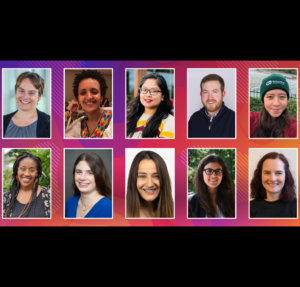Choosing a mate is hardly random. During courtship in the diploid phase of our life cycle, we often employ elaborate rituals and biological signals to attract and assess potential mates. But after that, we usually assume that eggs and sperm choose each other randomly at fertilization. Or so says Mendel’s First Law. But sometimes, Joseph Nadeau suggests, some genetic variants defy this Law, with the combination of sperm and egg being based on their genetic content.
In his review published in GENETICS, Nadeau explores cases in which nonrandom pairing of sperm and egg at fertilization distorts the expected ratio of offspring genotypes. Although it seems logical that the fastest sperm with the best sense of direction would be the most likely to fertilize the egg, there appear to be mechanisms that cause some unions to be more probable than others are.
For example, even once a chosen few sperm reach the oviduct, it’s not a simple race to find the egg. In one study, researchers found that in pigs, sperm bearing X-chromosomes elicit different transcriptomic responses in the female oviduct than those that have Y-chromosomes do. Many of the genes identified as specifically upregulated by sperm carrying a Y-chromosome are immune genes, hinting that the female immune system may contribute to sex selection.
This is only one of several mechanisms Nadeau describes that could account for nonrandom joining of sperm and eggs. But biased fertilization is often overlooked as a potential cause of transmission ratio distortion. Instead, departures from Mendelian expectations are often assumed to be caused by problems in embryonic development—without considering litter sizes or doing other tests to support this conclusion. Perhaps a closer look at these exceptions would reveal more instances in which other factors are involved, leading us to a deeper understanding of fertilization and the molecular basis of Mendel’s First Law.
Nadeau, J. Do Gametes Woo? Evidence for Their Nonrandom Union at Fertilization.
GENETICS, 207(2), 369-387.
DOI: 10.1534/genetics.117.300109
http://www.genetics.org/content/207/2/369













